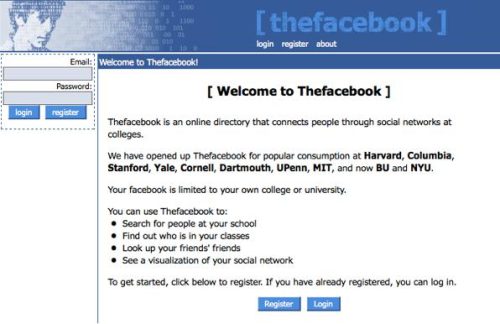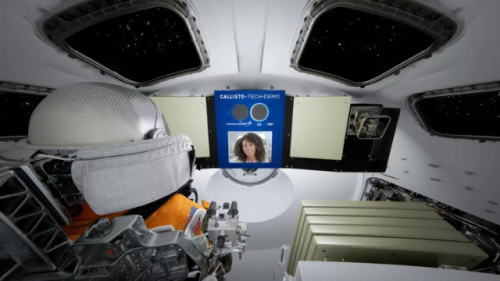
January 1st 2023 will mark 40 years of the Internet. But what exactly is the ‘Internet’ and what does it mean to us?
Well, in layman’s terms, the Internet enables users at any one computer to get information from any other computer through a global system of computer networks, wires and protocols across which information travels.
Events 40 years ago laid the foundation to connect billions of people across the globe, creating opportunities in ways we could simply never imagine.
Here are just some of the key technological milestones that bring us to the Internet we know and use today:
 1983: On January 1st, TCP/IP communications protocols were established, which allowed different computers on different networks to “talk” to each other for the first time, interconnecting devices to enable them to send and receive data. On this date, the Advanced Research Projects Agency Network (ARPANET) and the Defence Data Network officially changed to the TCP/IP protocol, marking the birth of the Internet.
1983: On January 1st, TCP/IP communications protocols were established, which allowed different computers on different networks to “talk” to each other for the first time, interconnecting devices to enable them to send and receive data. On this date, the Advanced Research Projects Agency Network (ARPANET) and the Defence Data Network officially changed to the TCP/IP protocol, marking the birth of the Internet.
1989: English scientist Sir Tim Berners-Lee invented the World Wide Web, the pages you see when you’re at a device and online, which work on the Internet. His vision for what would become the web was outlined in a document called “Information Management: A Proposal”. At the time, his boss Mike Sendall described the proposal as “vague but exciting” …
1990: At CERN, the European Organisation for Nuclear Research in Geneva, the world’s first website and server went live in December 1990. They ran on Tim Berners-Lee’s NeXT computer which displayed the message: “This machine is a server. DO NOT POWER DOWN!”.
1992: Cisco filed its first patent for the IGRP (Interior Gateway Routing Protocol), a method for routing between computer networks. The proprietary routing protocol was developed to overcome the limitations of the standards-based protocol. Also in 1992, IBM (International Business Machines) created the world’s first smartphone, the Simon Personal Communicator – way ahead of the Blackberry or Apple’s iPhone.
2000: Programmer Aaron Swartz helped develop code that delivered ever-changing web content to users, when he was still a teenager. He helped invent the RSS feed, allowing users to “subscribe” to the update feeds of pages they liked and changing the way people browsed the Internet.
2004: In February, Harvard sophomore Mark Zuckerberg put the very first iteration of Facebook online. He had built what he then called ‘The Facebook’, a social media website to connect Harvard students with one another. By the next day, over a thousand people had registered, and that was just the beginning.

2005: In December of 2005, the global number of Internet users reached and surpassed one billion for the first time. Growth in all countries and regions of the world showed an increase of 182% between 2000 and 2005, according to Internet World Stats.
2010: In June of that year, cybersecurity researchers revealed the discovery of a sophisticated cyber weapon called Stuxnet, a computer worm designed to take over certain programmable industrial control systems and cause equipment to malfunction, while feeding false data to the systems monitors that the equipment was running as normal. It was among the first known digital attacks that caused physical damage and was thought to have been in development since at least 2005.
2015: Instagram, the photo-sharing site launched in 2010 by Kevin Systrom, reached 400 million users, outpacing Twitter, which would go on to reach 316 million users by the middle of the same year. Fun fact: the first prototype of Instagram was a web app called Burbn, which was inspired by Systrom’s love of fine whiskeys and bourbons.
2022: Cisco pushed the boundaries of deep space video collaboration by trialling a state-of-the-art, custom-built version of Webex on board the Artemis 1 Orion spacecraft, which travelled more than 240,000 miles away. This makes it the longest video communications ever to take place. As a leader in collaboration and communications, it has become our mission to keep humans connected, no matter where we are.

Over five billion people around the world use the Internet today – equivalent to almost 64% of the world’s total population. Internet users continue to grow too, with the latest data indicating the world’s connected population grew by more than 170 million in the 12 months to October 2022. Within the developed world, our lives are intrinsically anchored to a multitude of apps, devices, and services that we digitally consume throughout the day.
So, what lies ahead? Despite the incredible technological innovation surrounding the Internet over the last four decades, yesterday’s breakthroughs will not see us through the next iteration of digital development. To connect the remaining four billion people on the planet, the economics of the Internet need to change, as do the ways we design, build and operate networks. Above all, we need to ensure today’s Internet is built on a foundation of security and sustainability: safeguarding our services but also protecting our planet, by reducing energy requirements.
For all these reasons, we will need a new era of connectivity, with AI helping to create a more predictive Internet. The past few years have shown us people have far less patience dealing with a faulty app than standing in a real-life queue. Digital services need to work first time: 57% of people say brands have one shot to impress them, or they won’t use it again. The solution? Smarter technology that pre-empts problems and threats.
Fuelled by AI, the next generation of the Internet will be smarter than we can imagine, learning to predict and plan, based on usage patterns. Networks will be able to spot problems before they arise, and ultimately become self-healing, reducing downtime and giving people seamless online experiences.
A more predictive Internet will also be the cornerstone for all the exciting new technologies we hear about in the media – holograms, the metaverse, quantum computing. None of this can be delivered unless the network that powers the Internet is strong, reactive, resilient, and predictive. Partnerships we have with academia today to progress research in AI and Quantum will help fuel all these developments.
So, let’s see what the next 40 years bring…
Happy anniversary internet, it’s been quite the ride, and there’s plenty more to come.
